
Cpvc Pipes & Fittings
CPVC PIPES
Airwin CPVC Pipes our premium offering manufactured using high grade raw material and the latest technology, making these ideal for hot and cold-water applications. These pipes can withstand higher temperatures as compared to any other plastic piping system.
We recommend the use of our CPVC pipes for water supply and distribution in both domestic and industrial applications, and for solar and electric water heaters.
Airwin CPVC pipes are lightweight, non-corrosive and long lasting, which make them a good substitute for GI & conventional pipes. These pipes are manufactured using lead free compounds. Hence they are safe, health and environment friendly.
Our stringent quality assurance approach across all stages of manufacturing gives this product a high degree of reliability, making Airwin CPVC a preferred choice of leading MEP consultants, architects, builders, plumbing contractors,plumbers, and quality-conscious people across the country.
The CPVC plumbing pipes are available in sizes from 15mm (1/2″) to 50mm (2″) conforming to IS 15778 in SDR 11 & 13.5 classes. CPVC pipes are also available in ‘Iron Pipe Size’ (IPS) from 65mm (2 1/2″) to 150mm (6″) in Schedule 40 and Schedule 80 series which meet the requirements of ASTM F 441. These pipes are plain ended and are available in standard lengths of 3 and 5 meters with various pressure ratings.
Although these pipes have similar physical properties, the classes differ in wall thickness and therefore at any given temperature their pressure ratings will differ. Airwin CPVC pipes are recommended for water temperature up to 82°C.
CPVC FITTINGS
CPVC fittings are available in sizes from 15 mm (1/2”) to 50 mm (2”) and meet the requirement of ASTM D 2846 in Copper Tube Sizing (CTS). CPVC fittings from 65 mm (2.1/2”) to 150 mm (6”) in Schedule 40 and Schedule 80 are manufactured as per ASTM F 438 & ASTM F 439 respectively.
Features & Benefits

Leak proof joints

Fire Resistant

Lead-Free

Ideal for hot and cold water

High Impact Strength

UV Stabilised
Application
Airwin CPVC pipes are suitable for hot and cold water distribution systems for indoor and outdoor applications. Note: Not suitable for compressed air and gases.
Hospitals
Academic institutes
Hotels & resorts
Swimming pools
Manufacturing plants
Highrise buildings
Technical Details
PRESSURE DERATING FACTORS AT WORKING TEMPERATURES
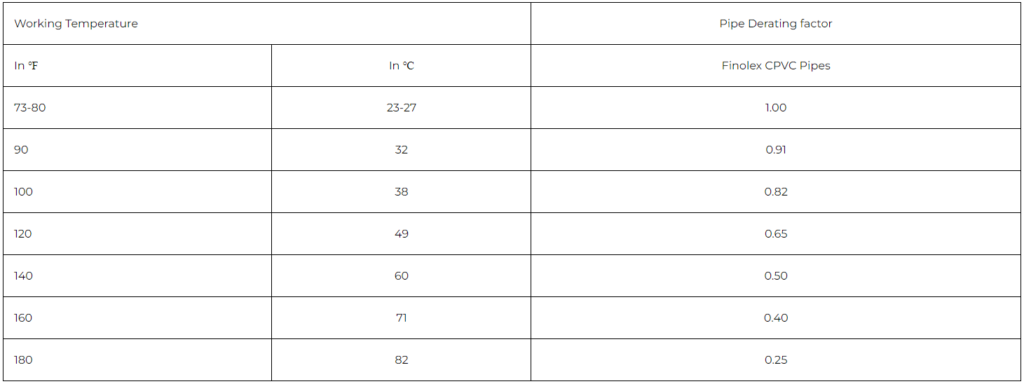
JOINTING

1. Measuring : Measure the required length of pipe and marking done.
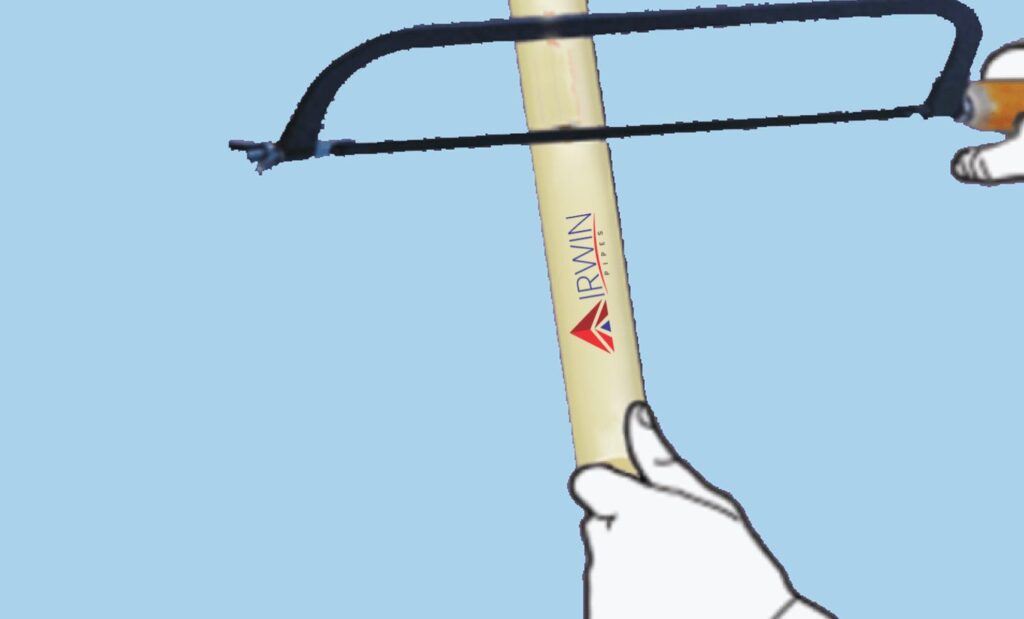
2. Cutting : The pipe must be cut in a square shape. The base of the fitting socket needs a rubber ring to seal it, since an angled cut may result in leakage.
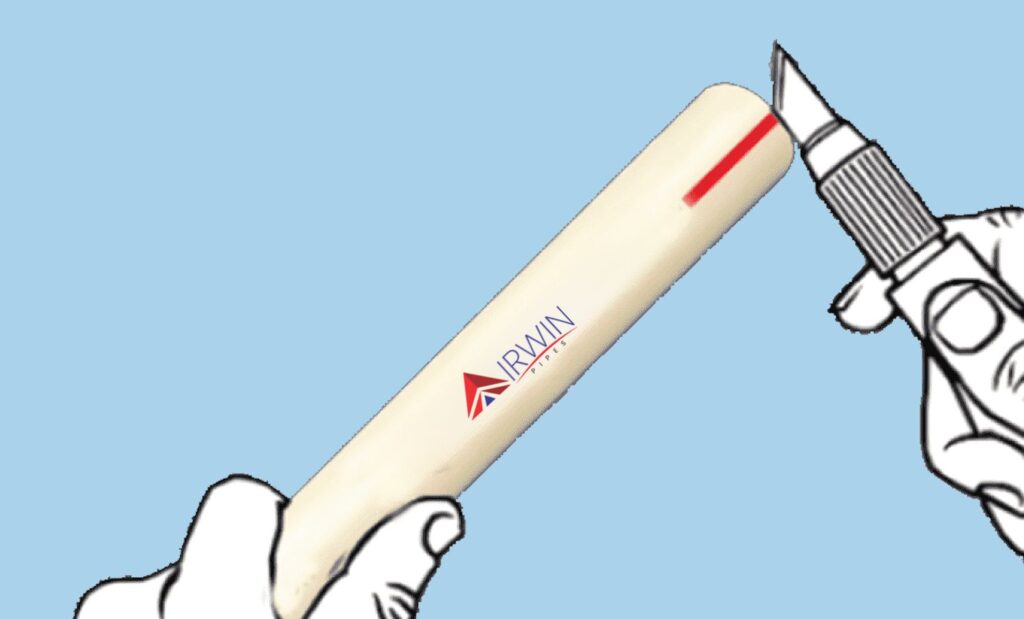
3. Deburring & Chamfering : All the burr must be removed from the inside and outside of the pipe with a knife, file or de-burring tool. A 10° – 15° chamfer must be made at the end of the pipe.
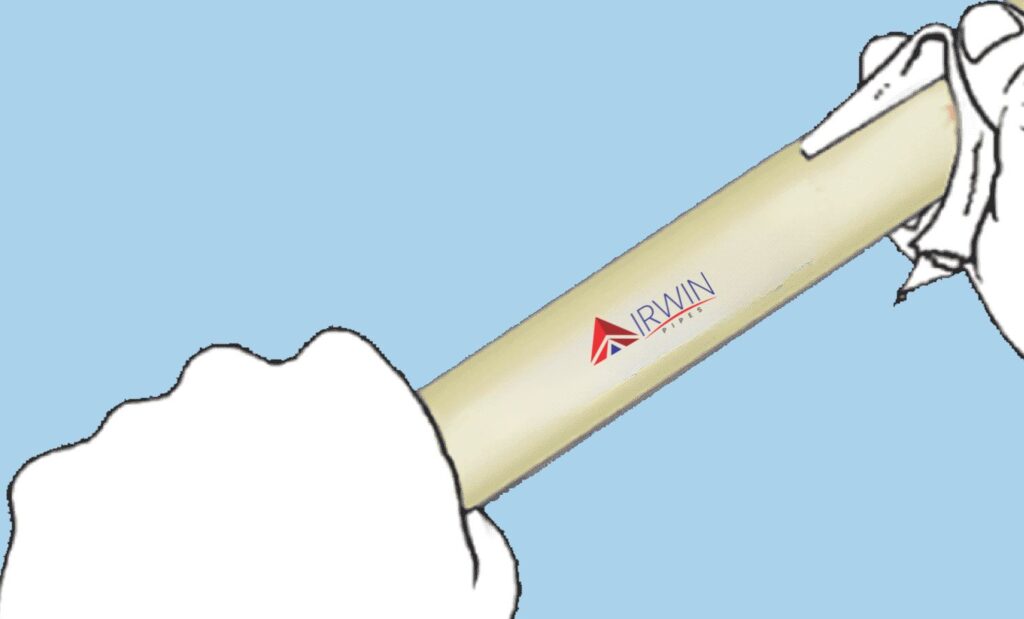
4. Cleaning : The surface dirt, grease or moisture must be removed with a clean dry cloth.
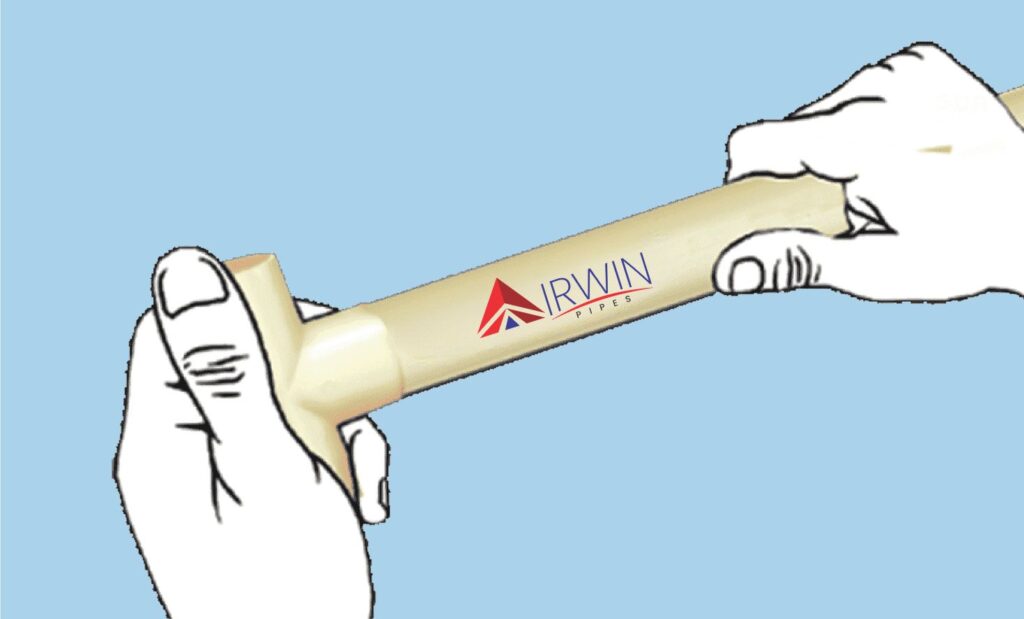
| 5. Check Dry Fit : Using light pressure, the pipe should be inserted one third to half the way into the socket. Note that pipes and fittings that are too tight or too loose should not be used. |
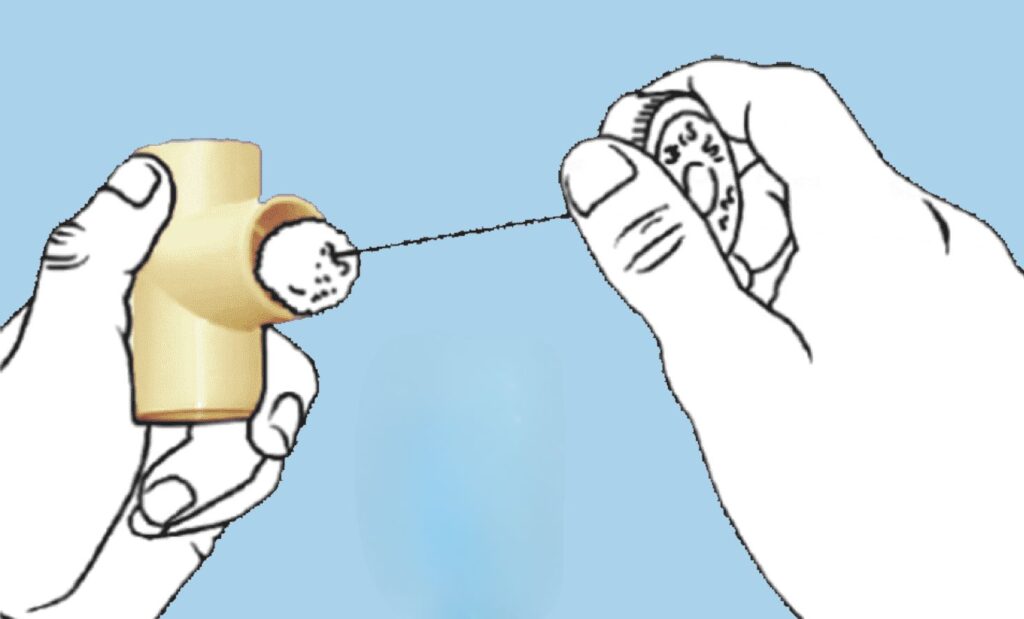

6. Solvent Cement Application : An even layer of cement should be applied to the outer side of the pipe and a medium layer of the plumbing solvent cement to the inside of a fitting.

7. Assembly : Join the pipe and fitting socket till in contact with the socket bottom. Hold the pipe and fitting together until the pipe does not retract. The excess cement can be removed from the exterior surface of the pipe and fitting. A properly made joint will show a continuous bead of cement around the perimeter of the pipe and fitting.
SOLVENT SET & CURE SCHEDULE GUIDELINES
AVERAGE INITIAL SET SCHEDULE FOR CPVC SOLVENT CEMENT
Set Schedule is the necessary time to be allowed before the joint can be carefully handled.
(In damp or humid weather allow 50% more set time.)

AVERAGE JOINT CURE SCHEDULE FOR CPVC SOLVENT CEMENT
Joint cure schedule is the necessary time to be allowed before pressurizing the system.
(Allow 50% more set time in damp or humid weather)

THERMAL EXPANSION & CONTRACTION
CPVC expands when heated and contracts when cooled, like all piping material. CPVC, regardless of the pipe diameter will expand about 25mm per 15m length (1 inch per 50 feet) in length when put into a 23°C temperature increase; therefore provisions must be made to accommodate this movement. Laboratory testing and installation experience also have demonstrated that the practical issues are much smaller than the coefficient of thermal expansion would suggest. The stress developed in CPVC pipes is generally much smaller than those developed in a metal pipe for the same temperature change, primarily because of the difference in elastic modulus.
Expansion is mainly a concern in hot water lines. Generally, thermal expansion can be accommodated with changes in the direction. A long straight run may require an offset or loop. Only one expansion loop, properly sized is required in a single straight run, regardless of its total length. If more convenient, two or more smaller expansion loops, properly sized, can be utilised in a single run of the pipe to accommodate the thermal movement. Ensure to hang the pipe with smooth straps that will not restrict the same.
Thermal Expansion Formula:
∆ L = Lp C ∆T
Where
∆L = Change in length due to change in temperature , Lp = Length of pipe
C = Coefficient of Thermal Expansion
CPVC
Expansion Loop Formula:
L = 
Where
L = Loop in Length (in.), E = Modulus of Elasticity at maximum temperature (psi),
S = Working Stress at Maximum Temperature (psi), D = Outside Diameter of pipe (in.),
∆L = Change in length due to change in temperature (in.).
PRECAUTIONS
• Brush must be clean and dry before commencing the solvent welding process.
• When the system is to be concealed, it should be pressure tested before the concealment.
• Do not attempt cementing in the rain or in the presence of moisture.
• The cement should be used within the expiry period mentioned on the container.
• Use of primer prior to the solvent cement joint is essential for pipe sizes 65mm (2 1/2”) and above. This will increase the joint strength.
• Keep cement away from all sources of ignition, heat, sparks and open flame.
• Keep containers of cement tightly closed after use.
• Store solvent cements and piping component in a cool area.
